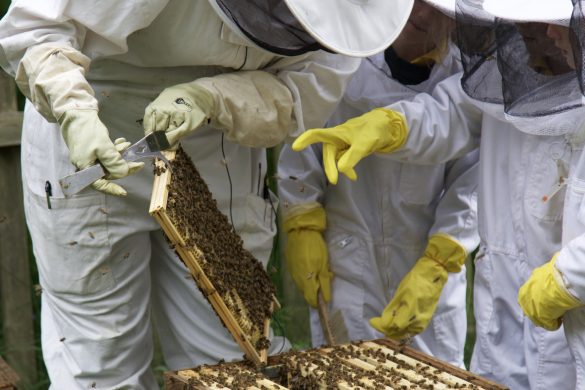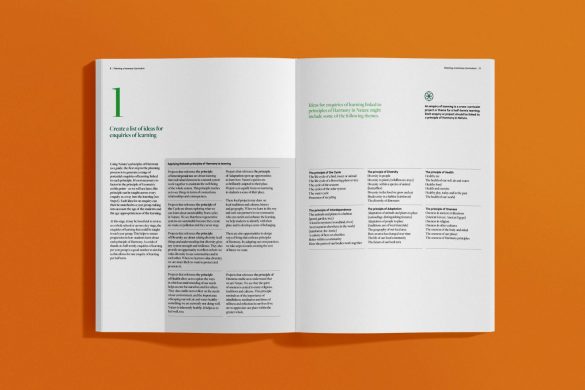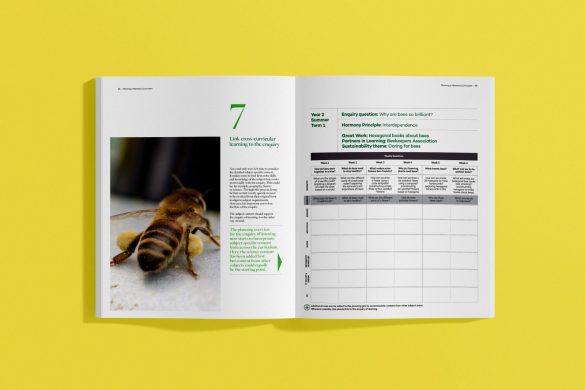What is enquiry-led learning?

How to develop cross-curricular teaching and learning based on Nature’s principles of Harmony
The word ‘enquiry’ is defined as ‘a seeking for truth or knowledge’ or ‘seeking information through questioning’. Enquiry-led learning therefore develops in young people the ability to ask questions, to research and generate useful knowledge, and to explore ways of answering the questions raised.
Enquiry-led learning is joined-up learning
In its delivery, enquiry-led learning should bring together different subject skills and knowledge and apply them through the project being explored. This approach leads to more discerning learners, to people who ask good questions. If we are to create a healthier, more sustainable future, we have to question and challenge the status quo of what we currently do and look for ways to improve it. That could be at a school or community level or even at a global level through projects that focus on issues that connect students around the world.
When students learn in this way, it is, of course, likely to impact on their thinking and actions as they grow into adult life, too.
From our observations in schools, enquiry-led learning is extremely powerful and empowering for students. It motivates them to find out more. We can see that when learning is delivered in this way, the outcomes (providing the core skills and knowledge are secured and applied effectively through the learning process) can be outstanding. The challenge is getting the balance right between securing the skills and knowledge, and applying them in meaningful ways.
Enquiry-led learning: getting the timing right
In each year group, there is the opportunity to teach six enquiries of learning per year – one each half-term. These enquiries can be focused on projects linked to history, geography and science so that two history, two geography and two science projects are covered each year.
It is important to give some thought to what the right time of year is to teach each enquiry. For example, enquiries linked to food growing may be planned for the summer months through to harvest-time. The life cycles of bees and butterflies and the study of our local biodiversity may also be taught during the summer when plants and wildlife can be seen and identified. Conversely, projects about the Antarctic and Arctic may be studied during the colder winter months. If students are learning about Shackleton, they may find inspiration to write diaries of their adventures in Antarctica by getting out in the school grounds on a cold winter’s day with gloves and hats on! Learning about the stars and the solar system is well-suited to the winter, too, when it is darker and easier for students to see star constellations and planets in the night sky.
Capturing students’ imaginations
The next step if to think of a question – an enquiry question – that encapsulates the essence of the enquiry and gives the students a way into the learning. It is important to ensure the enquiry question is phrased in a way that opens up a journey of exploration. If the enquiry question captures the students’ imaginations, they will naturally want to research and find out more. The question therefore needs very careful consideration.
An enquiry question might ask students Why are bees so brilliant? or What journey does a river take? For older students, the enquiry question might prompt more in-depth reflection and debate linked to global issues – for example, Is Antarctica worth protecting?
In defining the enquiry question, it is always good to ask the students in the preceding weeks what they would like to learn about in relation to the enquiry. This helps generate further questions that can feed into the learning.
When you’re ready to start the planning process, it’s time to start thinking of ideas for the enquiries of learning you might teach.



